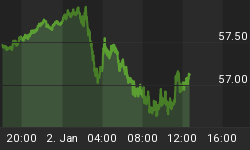In our January 18th article we concluded that weak seasonality is behind us and the markets are approaching several consecutive weeks with strong bullish bias. The seasonally strong period started on Monday, Feb 2nd (green shaded area). During the last three weeks all three major averages (GJIA, SPX and NDX) made new highs, with the SPX gaining a little over 6.5%:

The fly in the ointment is that the DJ Transportation average has failed to make a new high yet, thus manifesting non-confirmation with the DJIA.
Looking forward, seasonality suggests that during the next few weeks the averages should enter a sideways/down phase.
One of the easiest ways to follow the ebb and flow of price movement, without the associated noise and random volatility is to use OT Trend Bars™. They offer several advantages over Renko, Kagi, and Trend break charts, and are suitable for long and short-term traders alike. They can also help shed any ambiguity associated with the use of other traditional TA tools. OT Trend Bars™ not only show the direction of the underlying true trend, but they are designed to get longer when the trend gets stronger, and to get shorter when the trend weakens or is about to end, thus giving advance warning when caution is needed:

Chart courtesy of OT Seasonal
In summary, the trend for the major averages remains up and will continue to do so until the January lows are broken.
By contrast, the outlook for gold does not look very encouraging. GLD is currently testing key support. A break below the 50% retracement of the '08 - '10 upswing at 113.6 will signal that the lower cascading pattern will continue to unfold, pointing to a first downside target of 92.925:


















